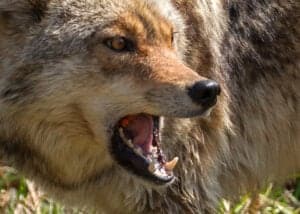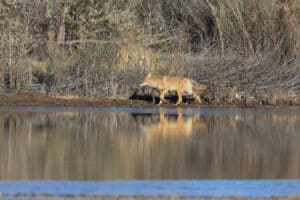Key Points:
- With 90% of its diet consisting of meat, the coyote hunts and preys on a range of animals including deer, moose, snakes, young water birds, pigeons, fish and crustaceans.
- Gray wolves, cougars, American black and grizzly bears, and Canada lynxes eat coyotes.
- Wolves kill more coyotes than other predators, which also include American alligators and golden eagles.
Coyotes are intelligent animals that have adapted to their environment by hunting and consuming a wide range of animals and food in human-inhabited areas. But while they may be fierce predators and can run up to 40 miles per hour, that doesn’t make them immune to being on the menu for other predators. Read on to discover more about coyotes, their behavior and diet, and the animals that prey on them.
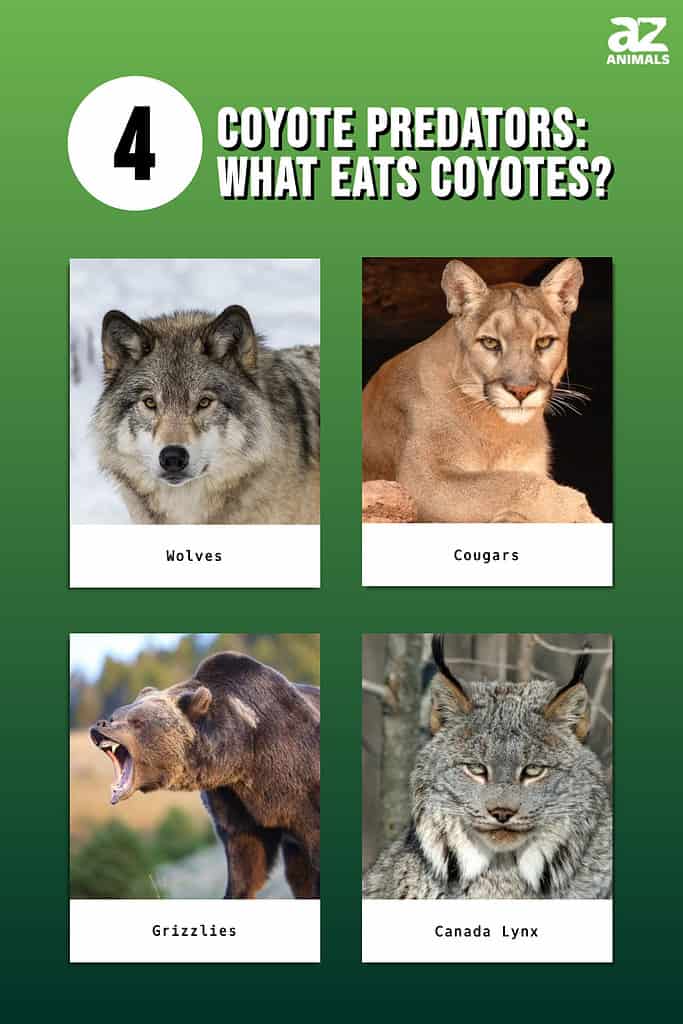
Coyotes’ Behavior
Coyotes are sometimes called brush wolves and make distinctive calls in communication with other coyotes. It is proven that they are more effective when they hunt in packs, thereby reducing coyote casualties and increasing productivity. They are at higher risk when alone and traveling outside their pack. At a kill site of prey, if alone they can easily be dominated by wolves, grizzly bears, cougars, or other deadly predators as they can not working defensively or cooperatively with a pack.
During spring, female coyotes give birth to litters of three to nineteen pups. These litters increase their population and improve the strength of their hunting pack. Coyotes are very protective of their young and will kill threats such as rattlesnakes to ensure the security of their pups. If they survive, the pups will be ready for hunting by the following fall.
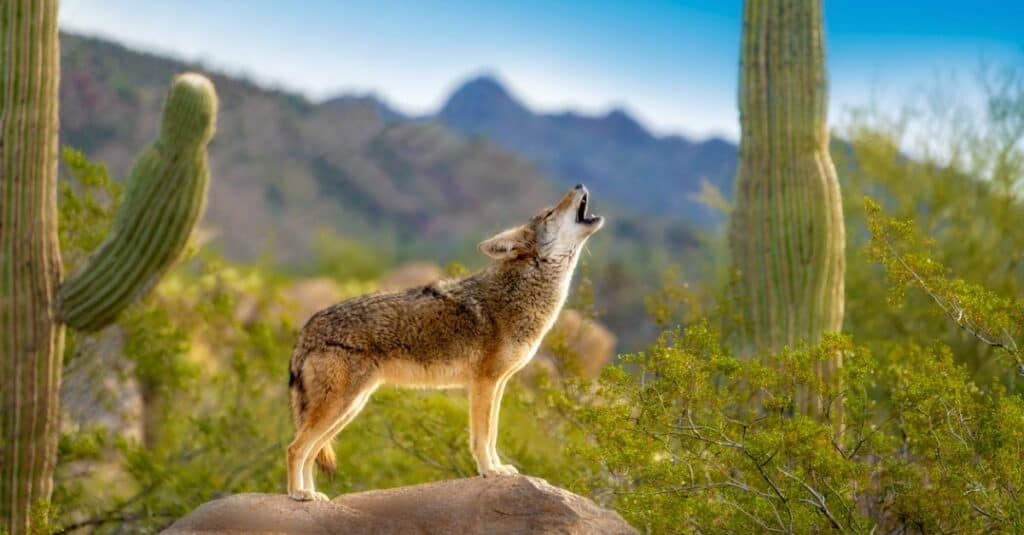
Coyotes make distinctive calls in communication with other coyotes.
©JayPierstorff/Shutterstock.com
Coyotes’ Diet
Predominantly categorized as carnivores, coyotes are omnivores and tend to eat plants and animals. With about 90% of its diet consisting of meat, the coyote hunts and preys on deer, moose, snakes, young water birds, pigeons, fish and crustaceans.
Interestingly, they prey on amphibians except for toads because of their foul skin secretion, which wards off predators. When coyotes kill rattlesnakes to serve as food and protect against vicious attacks on their pups, they first deceitfully tease the snake, which then stretches out, allowing the coyotes an excellent angle to clap their jaws against the head of the snake and finally take it out.
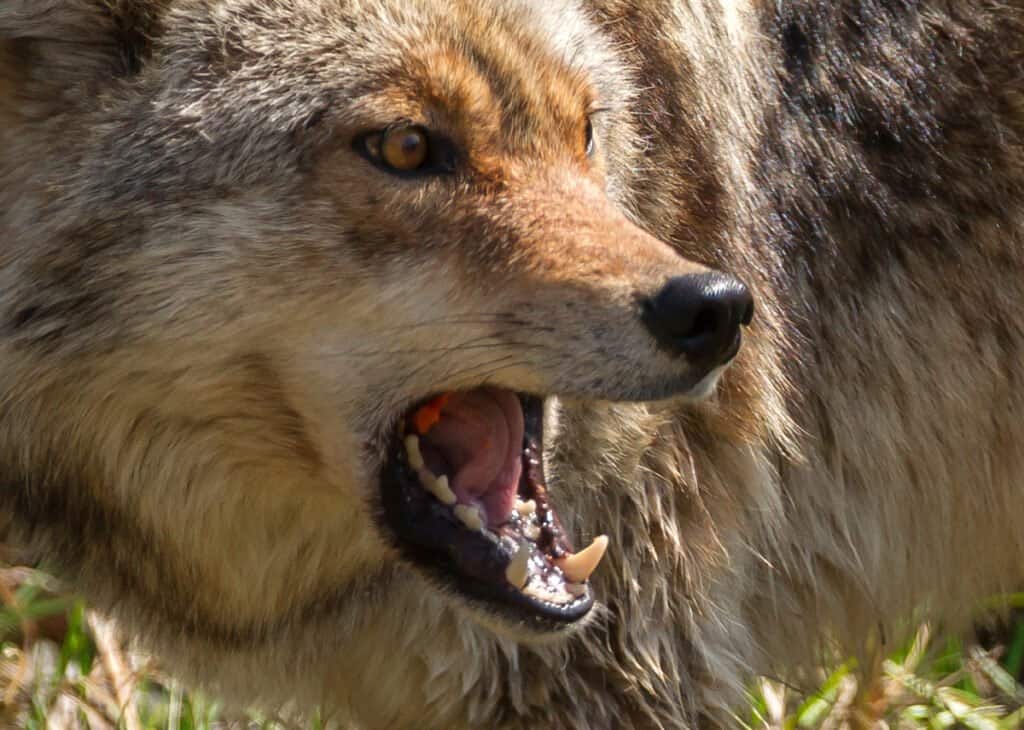
Among the animals that coyotes eat are deer, moose, snakes, and fish.
©Derek R. Audette/Shutterstock.com
Coyotes’ Range
For centuries, coyotes have been able to adapt and increase their habitat across various environments, and even more boldly, areas inhabited by humans. Once restricted to the prairies and desert areas of Mexico and central North America, coyotes can now be found in every U.S. state except Hawaii.
Since the 1700s, these highly adaptable creatures have expanded their range across an entire continent to Canada, populating rural and urban areas. According to National Geographic, since the 1950s, coyotes have increased their habitat by 40% — twice the rate of any other North American carnivore.
What Eats Coyotes?
Gray wolves, cougars, American black and grizzly bears, American alligators, large Canada lynxes, and golden eagles eat coyotes. Despite being fierce predators skilled in hunting, coyotes know their place when it comes to the natural food chain. Though they appear dominant when dealing with their prey, they are vulnerable when they cross paths with predators such as wolves and cougars.
Coyote Predators: Wolves
Being one of the most predominant predators of coyotes, wolves hold the record of being the sole facilitator of a 39% decline in the population of coyotes in the Lamar River Valley during the reintroduction of wolves in the 1990s. A study reports a 33% decline in the population of coyotes in the Grand Teton National Park compared to other parks devoid of wolves.
The later development is in correspondence to the predator activities of wolves on coyotes. Wolves tend to kill and eat coyotes whenever the latter trail them for their kills.
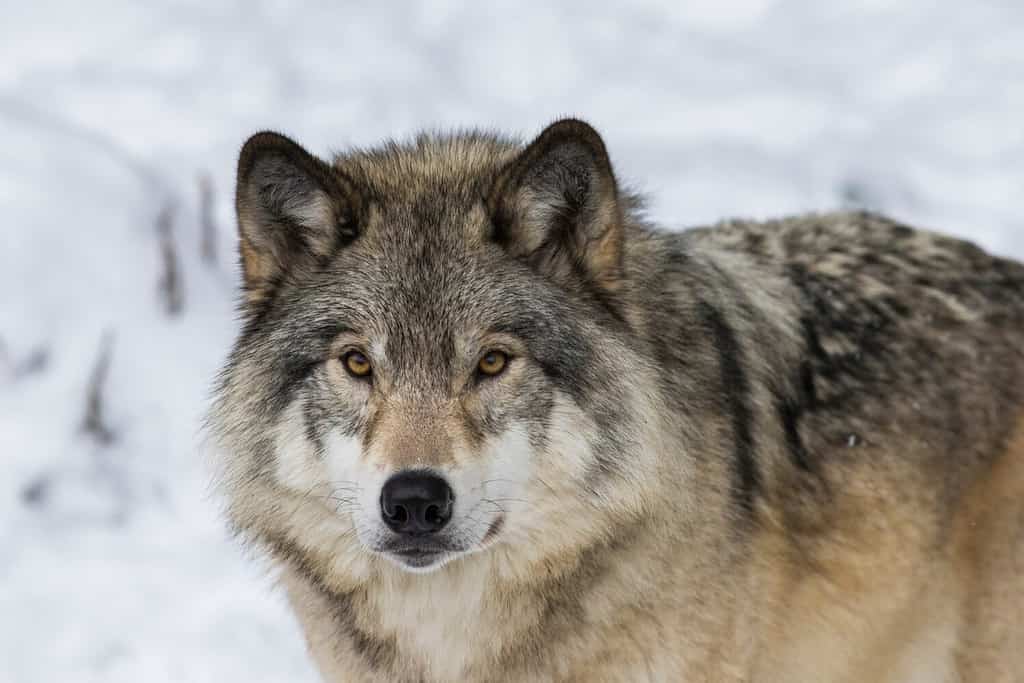
Wolves are one of the main predators of coyotes.
©Mircea Costina/Shutterstock.com
Coyote Predators: Cougars
Cougars are wild large cats belonging to the subfamily Felinae. They are renowned as ambush predators, feasting on various prey, with the coyote being one of its favorite targest. Cougars can easily ambush and eat an individual coyotes but when under pressure from a pack of coyotes may back down or yield a kill. They are very skilled at stalking their prey, particularly as their habitats provide cover in the form of dense underbrush or hilly areas.
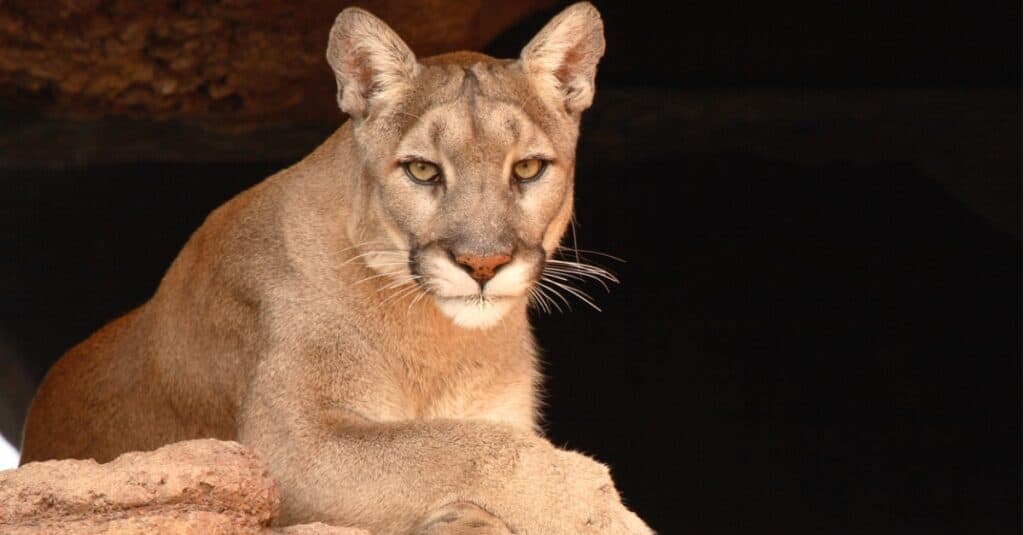
Cougars are known for their skill as ambush predators.
©iStock.com/gatito33
Coyote Predators: American Black and Grizzly Bears
Predominantly found in North America, the American black bear and the grizzly bear belong to the order Carnivora. Like coyotes, they are omnivores. The coyote is among the animals these bears eat. Other mammals that fall prey to the grizzly bear include moose, elk, and bison.
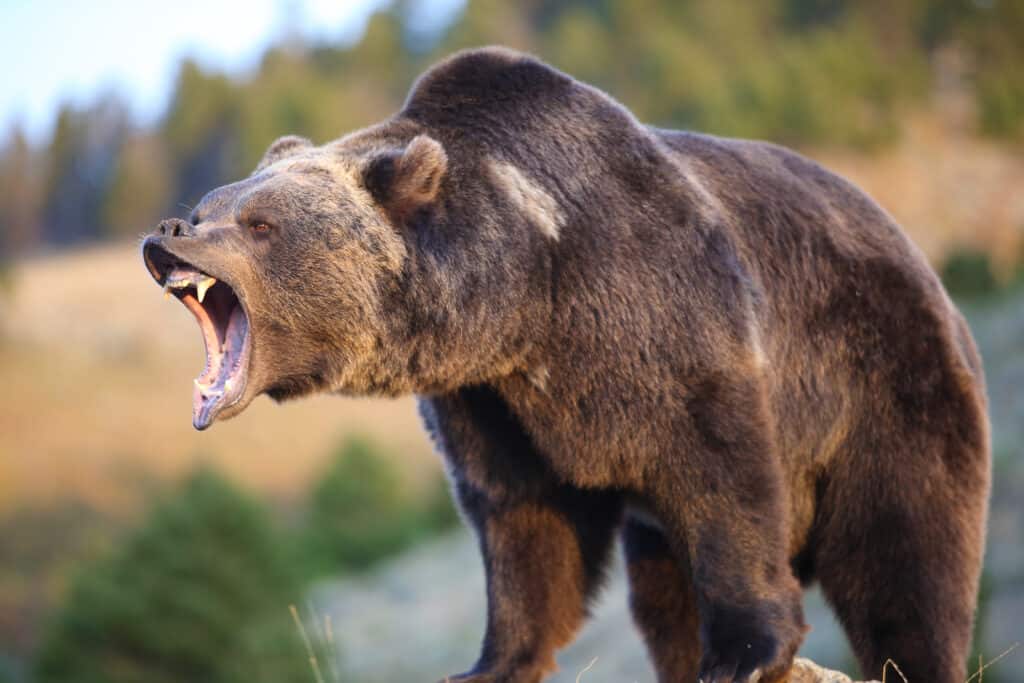
Grizzly bears will sometimes eat coyotes.
©Dennis W Donohue/Shutterstock.com
Coyote Predators: Canada Lynx
The Canada lynx is found in sparse numbers across Alaska, Canada, and some northern areas of the United States. It can be categorized by its long, triangular-shaped ears with black tufts.
This predator hunts mainly at night and can kill its prey with a bite to the head or neck. It is often referred to as a specialist predator whose presence in a particular settlement or range is dependent on the availability of prey. It is very stealthy in its ambush and can easily take on an unsuspecting coyote. Apart from coyotes, it is also very fond of hares.
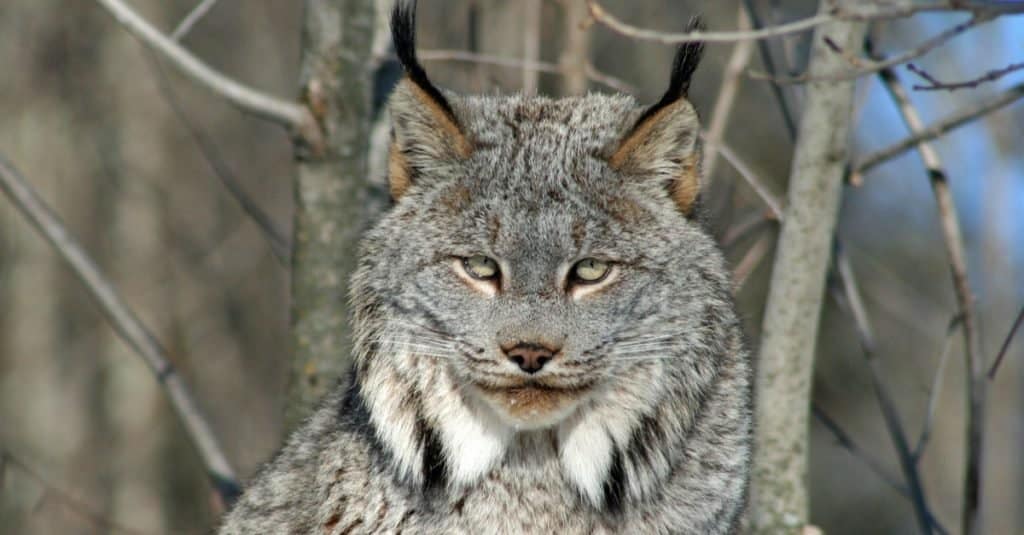
The
Canada lynx
hunts mainly at night and can kill its prey with a bite to the head or neck.
©Through Christy’s Lens/Shutterstock.com
Other Coyote Predators
The American alligator (Alligator mississippiensis) is the largest species within the family Alligatoridae. American alligators are voracious and deadly apex predators. They eat coyotes and other mammals, fish, amphibians, and birds. An adult male American alligator can weigh more than 1,230 pounds (560 kg) and reach 11.2 to 15.7 feet (3.4-4.8 m) in length. Its teeth, when snapped together, could kill a trespassing coyote instantly.
Another animal that preys upon coyotes is the golden eagle. Humans are also responsible for killing coyotes.
Summary of Coyote Predators
Here’s a recap of the animals we looked at that hunt and eat coyotes.
| Number | Predator |
|---|---|
| 1 | Gray wolves |
| 2 | Cougars |
| 3 | American black bears |
| 4 | Grizzly bears |
| 5 | Canada lynxes |
| 6 | American alligators |
| 7 | Golden eagles |
| 8 | Humans |
The photo featured at the top of this post is © iStock.com/GatorDawg
Thank you for reading! Have some feedback for us? Contact the AZ Animals editorial team.



